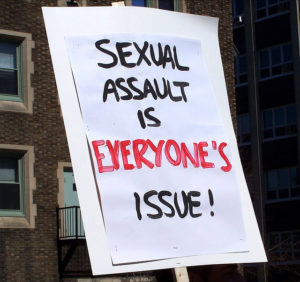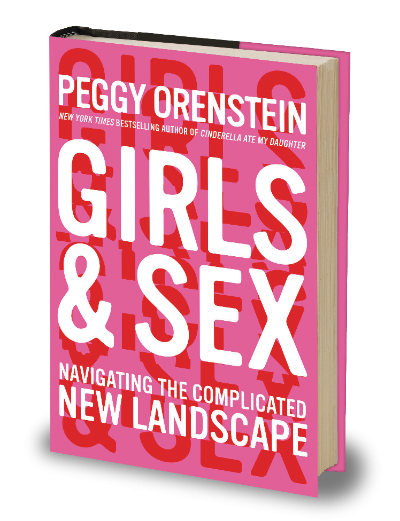I have followed the work of journalist and author Peggy Orenstein over the years, and learned a lot from her, particularly her books, Cinderella Ate My Daughter and Schoolgirls. Her latest, Girls & Sex: Navigating the Complicated New Landscape is no exception.
Girls & Sex
Rather than write about what she already knows, I resonate with how she has burning questions, goes after the answers, and those answers end up as a book (this is certainly how Families of Two and The Baby Matrix came about). In Girls & Sex, Orenstein asks provocative questions and lays out full frontal answers about the way young women today “think, feel, and act regarding sex.”
With a nice balance of research, candid stories told by young women and her own ruminations, Orenstein explores the answer to this question: “Do today’s young women have more freedom than their mothers to shape their sexual encounters, more influence and more control within them? If not, why not?”
To get answers, she interviewed over 70 young women between ages 15-20 about their “attitudes, expectations, and early experiences with the full range of intimacy” and consulted with experts, including psychologists and academics. What she found out was “often surprising, frequently upsetting, always illuminating.” I would add saddening. But I’ll get to that last.
In 1995, the National Commission on Adolescent Sexual Health declared that teen intimacy ought to be “consensual, non-exploitive, honest, pleasurable, and protected against unintended pregnancy and STDs. Girls & Sex gives us a look into why our society remains “so shamefully short of this goal.”

Peggy Orenstein
In seven in-depth chapters, Orenstein covers a range of sexual terrain. They start with the arena of objectification. She gives us a real good look into the “incessant drumbeat” of young women’s self-objectification today: the pressure on them “to reduce their worth to their bodies and see those bodies as a collection of parts that exist for others’ pleasure; to continuously monitor their appearance; to perform rather than feel sensuality.”
What is the world of oral sex like for young women and men today? In Girls & Sex young women engagingly talk straight about their experiences. In this discussion we also learn why young women so often understand so little about sex and about themselves before engaging in it.
What does being a ‘virgin’ mean to young people these days? Do abstinence pledges really work? Why are “purity and hypersexualization” the flipsides of the same coin? Orenstein discusses these questions and what needs to be done to teach young women that their sexual status (e.g., virgin or not) is not the “measure of their personhood, their morality, their worth.”
Want a deep look into the hook up culture? In this book, I learned more about this than I could have imagined. Orenstein gives an interesting discussion on how it’s not so much that hook ups are bad or good – it’s more about how to ensure “reciprocity, respect, and agency regardless of the context of a sexual encounter.” In the young women’s stories, we learn that from this context, why the hook up culture has a ways to go.
What is it like to wrestle with and come out as gay as a young woman today? Orenstein takes us into real lives, and how the online world plays an integral part. She also ponders questions like, “When we have defined femininity for their generation so narrowly, in such a sexualized, commercialized, heteroeroticized way, where is the space, the vision, the celebration of other ways to be a girl?
What is almost the most disturbing area Orenstein sheds light on? The realities of sexual assault on college campuses. She gives a disturbing yet excellent discussion of rape statistics, including the  recent survey done by the Association of American Universities’ Campus Climate Survey. In addition to the problems, Orenstein enlightens on potential solutions, including detailing “affirmative consent” policies.
recent survey done by the Association of American Universities’ Campus Climate Survey. In addition to the problems, Orenstein enlightens on potential solutions, including detailing “affirmative consent” policies.
Orenstein ends with a call to reframe the public conversation about what “healthy, consensual, mutual encounters between young people should look like” and hope for change. In this vein, in Girls & Sex we learn about the work of educators who are creating innovating programs for young people to get real information and provide forums for discussion. We learn why we should look to the Netherlands for answers to raising sexually healthy kids. And we learn about Associate Professor Amy Schalet’s “ABCD” model for raising sexually healthy kids.
Despite the examples of hope, I left this read very much in touch with how far we still have to go when it comes to true gender equality and women’s healthy gender identity. I went back to her original question: Do today’s young women have more freedom than their mothers to shape their sexual encounters, more influence and more control within them? Sadly, As Orenstein shows us, the answer is complicated; to me, the scale tips to no.
These poignant quotes remain relevant to generations past and to today’s generation of young women:
“…the personal is still political: how can girls achieve equality in the classroom or the boardroom if they don’t have it in the bedroom?”
This is a matter of “intimate justice” – the fundamental issue is one of “gender inequality” and “power dynamics in our most personal relationships.”
If you are a parent, educator, activist or someone wanting real insight into where society is when it comes to gender equality and empowerment of young women, get your hands on Girls & Sex.

